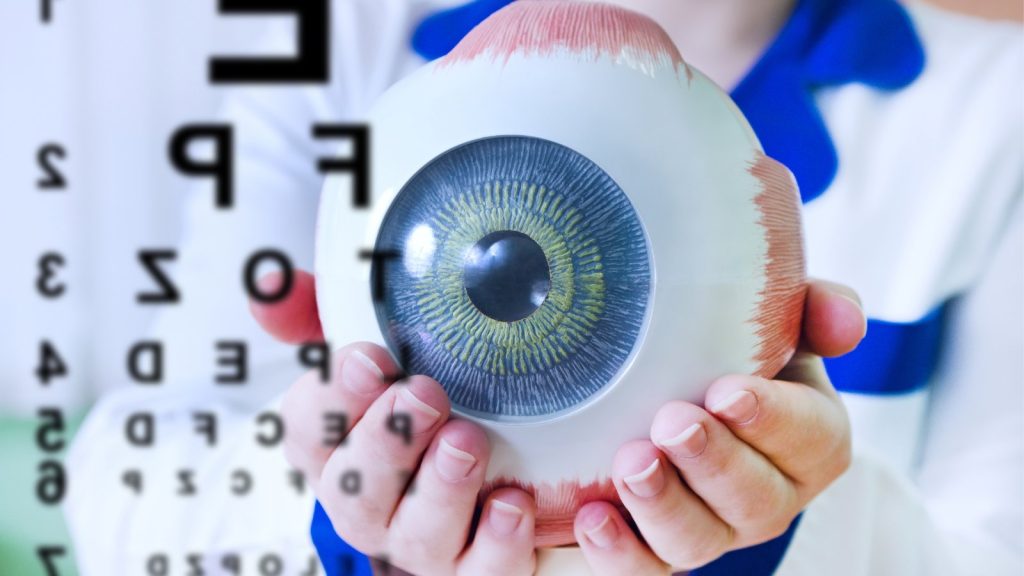Premier Eyecare Near Me: Professional Vision Solutions Available
Wiki Article
The Role of Advanced Diagnostic Devices in Identifying Eye Disorders
In the world of ophthalmology, the usage of sophisticated diagnostic tools has actually reinvented the early recognition and administration of various eye conditions. From finding subtle modifications in the optic nerve to checking the progression of retinal conditions, these modern technologies play a crucial function in boosting the precision and effectiveness of detecting ocular conditions. As the need for specific and prompt diagnoses continues to grow, the integration of sophisticated devices like optical comprehensibility tomography and visual area screening has actually come to be vital in the realm of eye treatment. The intricate interplay between innovation and ophthalmic practices not only clarifies detailed pathologies but additionally opens doors to tailored therapy strategies.Significance of Early Medical Diagnosis
Very early diagnosis plays an essential duty in the effective monitoring and treatment of eye disorders. By finding eye conditions at a very early stage, medical care companies can offer ideal therapy strategies customized to the particular problem, eventually leading to better results for individuals.
Modern Technology for Identifying Glaucoma
Cutting-edge diagnostic technologies play a critical function in the early detection and tracking of glaucoma, a leading reason of permanent loss of sight worldwide. One such innovation is optical comprehensibility tomography (OCT), which supplies thorough cross-sectional pictures of the retina, permitting the measurement of retinal nerve fiber layer density. This dimension is important in evaluating damage brought on by glaucoma. Another sophisticated tool is aesthetic field testing, which maps the level of sensitivity of a client's aesthetic field, helping to find any kind of areas of vision loss characteristic of glaucoma. Additionally, tonometry is used to gauge intraocular pressure, a significant danger factor for glaucoma. This examination is important as raised intraocular pressure can bring about optic nerve damage. Newer modern technologies like the usage of fabricated knowledge algorithms in analyzing imaging data are revealing promising results in the very early detection of glaucoma. These sophisticated diagnostic devices enable eye doctors to identify glaucoma in its beginning, enabling for prompt treatment and better administration of the condition to avoid vision loss. visit the siteFunction of Optical Coherence Tomography

OCT's capacity to evaluate retinal nerve fiber layer density enables for accurate and unbiased dimensions, aiding in the very early detection of glaucoma even prior to aesthetic area defects become noticeable. Furthermore, OCT modern technology permits longitudinal tracking of structural adjustments in time, assisting in personalized treatment plans and prompt treatments to aid preserve individuals' vision. The non-invasive nature of OCT imaging likewise makes it a recommended option for checking glaucoma development, as it can be duplicated routinely without causing pain to the client. Overall, OCT plays an important function in improving the diagnostic precision and management of glaucoma, ultimately adding to better outcomes for individuals at risk of vision loss.
Enhancing Medical Diagnosis With Visual Field Testing
An essential part in comprehensive ophthalmic examinations, aesthetic area testing visit site plays a critical duty in enhancing the analysis procedure for various eye problems. By evaluating the full level of an individual's visual field, this examination supplies vital information about the functional stability of the whole visual pathway, from the retina to the aesthetic cortex.Visual area testing is especially valuable in the more tips here medical diagnosis and management of conditions such as glaucoma, optic nerve problems, and numerous neurological illness that can affect vision. Through quantitative measurements of peripheral and central vision, clinicians can spot refined modifications that may indicate the existence or development of these disorders, also prior to recognizable signs take place.
Additionally, aesthetic field screening enables the monitoring of treatment effectiveness, assisting eye doctors tailor restorative treatments to individual people. eyecare near me. By tracking changes in visual area efficiency in time, doctor can make informed choices concerning adjusting medicines, suggesting medical interventions, or carrying out other appropriate procedures to maintain or improve a person's aesthetic feature
Taking Care Of Macular Deterioration

Verdict
In conclusion, progressed diagnostic tools play a vital function in determining eye disorders early on. Technologies such as Optical Coherence Tomography and visual field screening have greatly improved the precision and effectiveness of identifying conditions like glaucoma and macular deterioration.Report this wiki page